Enoch, a biblical figure shrouded in mystery, has captivated the minds of theologians, scholars, and even secret societies like the Freemasons.
The story of Enoch and how it ties in with various religious and mythological narratives provides a fascinating insight into the ancient world and its belief systems. In this analytical feature, we explore the enigma of Enoch, delving into its origins, various interpretations, and cultural significance.
Enoch: An Enigmatic Figure from Genesis
Enoch is a character who appears in the Book of Genesis within the Hebrew Bible or the Old Testament. He is famously known as the seventh patriarch in the genealogy that begins with Adam and ends at Noah. According to biblical texts, Enoch led an exemplary life.
It is said that he “walked with God,” which signifies a close and harmonious relationship with the divine.
This led to his unique departure from the earth – because of his righteousness, Enoch was taken by God, avoiding the traditional experience of human death.
– (Genesis 5:24)
The Extraordinary Book of Enoch
While the reference to Enoch is relatively brief within canonical biblical scripture, the apocryphal Book of Enoch brings an intriguing perspective to his story. This ancient Jewish text, which didn’t make it into the official biblical canon, is revered by some religious sects, such as the Ethiopian Orthodox Church.
The Book of Enoch provides fascinating details on Enoch’s life and his encounters with divine beings – including angels and fallen angels.
In this text, Enoch is depicted as a “scribe of righteousness,” who is highly favored by God. It offers accounts of his astral journeys, where he receives divine knowledge about creation, the nature of the universe, and future events related to humanity. Consequently, Enoch is often associated with wisdom, spirituality, and prophetic insight.
The Watchers and The Book of Enoch
Another captivating narrative from the Book of Enoch is the story of the Watchers. These angelic beings, who were tasked with overseeing humanity, betray their celestial duties by engaging in relationships with mortal women.
These unions result in the birth of the Nephilim, a race of giants who wreak havoc on earth.
Enoch plays a crucial role in mediating between divine and fallen realms. He is brought before God to plead on behalf of the Watchers, who experience God’s wrath in the form of a great flood – an event echoing the story of Noah and the Ark.
The themes of repentance, divine judgment, and the consequences of defying the divine order provide an engaging, multi-layered narrative that continues to intrigue audiences today.
The Influence of Enoch: From Ancient Texts to Modern Interpretations
The story of Enoch’s ascension, as well as the Book of Enoch, have been particularly appealing to various religious and mystical traditions. For instance, the spiritual journey of Enoch has inspired the Merkabah or Hekhalot mystics in Jewish tradition, who sought out elevated spiritual experiences through meditation and contemplation.
With the intervention of Christianity, Enoch’s story takes on new dimensions. The New Testament’s Epistle of Jude quotes a prophetic passage from the Book of Enoch, lending credence to its spiritual relevance for some Christian denominations.
In Islamic tradition, Enoch is equated with the figure of Idris, a prophet mentioned in the Quran. Similar to Enoch’s narrative in the Bible, Idris is described as having been “raised to a high station” by Allah (Quran 19:57).
It further emphasizes his wisdom and prophetic teachings. The legend of Enoch and his association with divine knowledge has even found its way into hermetic and gnostic thought, where Enoch is sometimes equated with Hermes Trismegistus, the purported author of the Corpus Hermeticum.
Enoch and Freemasonry: Exploring Symbolic Connections
As we mentioned earlier, the figure of Enoch has also captivated the minds of certain secret societies, such as the Freemasons. However, it is essential to note that the connection between Freemasonry and Enoch is more allegorical than historical.
Freemasonry is a fraternal organization stemming from the traditions of ancient stonemasons.
It does not directly endorse specific religious dogmas, but rather embraces a diverse array of religious and philosophical inspirations to impart moral and ethical lessons to its members.
Within the Masonic framework, Enoch’s story symbolizes the pursuit of wisdom and the importance of gaining esoteric knowledge.
The Enochian Pillars: A Testament to Sacred Wisdom and the Preservation of Knowledge
The Enochian Pillars, also known as the Pillars of Enoch or the Two Pillars, are a fascinating element of the Enoch legend that can be traced back to various ancient sources, including Jewish and Masonic traditions.
Essentially, these pillars serve as symbols of the preservation of divine wisdom and knowledge, with Enoch playing a central role in their creation.
To better understand the significance of the Enochian Pillars, let’s delve into their origins, descriptions, and narrative implications.
Origins and Descriptions of the Enochian Pillars
The idea of the Enochian Pillars has roots in several ancient texts, such as the Bible, the Book of Jubilees, and the works of the first-century Jewish historian Flavius Josephus. In the Book of Jubilees, Enoch inscribes his knowledge of the heavenly luminaries and their movements onto stone tablets. Many scholars believe that these tablets could be an early representation of the Enochian Pillars.
Josephus, in his work “Antiquities of the Jews,” also mentions two pillars – one created by Adam’s son Seth and his descendants, and the other by the ancient Egyptians. These pillars were reportedly inscribed with astronomical knowledge and served as a testament to the wisdom of these antediluvian civilizations.
According to the Masonic lore, Enoch, the seventh patriarch, was granted divine knowledge and wisdom, which he feared would be lost during the inevitable cycle of natural disasters (such as the great flood) or human destruction. In an effort to preserve this sacred wisdom, Enoch constructed two distinct pillars, each designed to endure the ravages of time and calamity.
The first pillar was said to be made from brick, a material that would withstand fire, while the second pillar was crafted from stone and designed to resist water. Both pillars were inscribed with the knowledge of arts, sciences, and other esoteric teachings, ensuring that future generations could rediscover and build upon this sacred wisdom.
Symbolism and Significance of the Enochian Pillars
The Enochian Pillars represent more than just physical monuments; they are a powerful metaphor for the resilience of knowledge and the importance of safeguarding and transmitting it across generations. They embody humanity’s quest for wisdom and the preservation of divine revelations.
In Masonic tradition, the Enochian Pillars convey multiple layers of symbolism. They are a testament to the importance of architecture and the art of building, both of which are central to the Masonic craft. Furthermore, the pillars embody the duality of strength and stability – themes that resonate with the core principles of Freemasonry. In this context, the pillars of brick and stone can also be seen as representing the speculative and operative aspects of Masonry, respectively.
Moreover, the Enochian Pillars allude to the process of personal transformation and spiritual enlightenment – a journey that unfolds as one unravels the mysteries and acquires the esoteric knowledge embedded within Masonic teachings. This process is reminiscent of Enoch’s own journey, as he ‘walked with God’ and gained divine wisdom, ultimately transcending the boundaries of human existence.
Legacy and Influences of the Enochian Pillars
The story of the Enochian Pillars has had a lasting impact on various mystical traditions and secret societies over the centuries.
The Hermetic Order of the Golden Dawn, a prominent 19th-century esoteric order, drew inspiration from Enochian mysticism, incorporating Enochian elements into its rituals and practices.
The concept of Enochian Magic, a magical system developed by the Elizabethan polymath John Dee and his medium Edward Kelley, also shows the far-reaching influence of the Enoch legend.
In contemporary culture, the Enochian Pillars continue to inspire the imagination, making appearances in fiction, art, and multimedia. They serve as a reminder of humanity’s eternal pursuit of wisdom and the resilience of knowledge, as well as a symbol of our connection to the divine.
Conclusion
Throughout history, the enigmatic figure of Enoch has captured the human imagination. From religious texts to mystical traditions, Enoch’s associations with divine wisdom, his transcendent encounters, and his role in intriguing narratives like the Watchers continue to enthral and inspire.
The symbolic connections between Enoch and the Freemasons further exemplify the rich cultural tapestry woven throughout this iconic biblical figure’s legacy.
By examining Enoch, we are offered a glimpse into the ancient world, as well as insight into humanity’s desire to connect with the divine and unlock the mysteries that lay beyond our mortal perception.
Article by: Margaret S.

Margaret S. is a retired lecturer and devotes much of her time to theological and philosophical writing.
She was made a Freemason in the International Order of Freemasonry for Men and Women - Le Droit Humain.
(Margaret S. is her pen name for all her masonic papers)
Recent Articles: masonic history
 Protestantism and Masonic Influence in Brazil Discover the untold story of how Freemasons helped Southern Americans immigrate to Brazil post-Civil War, fostering economic and educational growth in Santa Bárbara d’Oeste and Americana. Learn about their pivotal role in establishing Protestant churches and ensuring the secularity of the Brazilian State amidst a Catholic-dominated society. |
 Explore the proper use of the sacred word in Brazilian Freemasonry through an analysis of Masonic literature and Bible translations. Uncover the errors in pronunciation and the need for corrections to maintain liturgical coherence in rituals. Discover insights on Masonry, rituals, and the Hebrew word Boaz. |
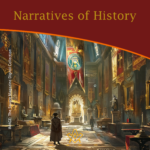 Narratives of History |
 A Very Royal Sesquicentenary |
 Unveiling the Enigma: Discover the Royal Society's Legacy and its Impact on Science. Delve into the fascinating history of the Royal Society, the prestigious UK academy shaping scientific progress since 1660. Explore its pivotal role in advancing knowledge, fostering collaboration, and unlocking the secrets of the universe. Prepare to be amazed! |
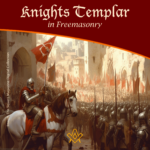 Knights Templar in Freemasonry Uncover the Mysteries of the Knights Templar in Freemasonry! Delve into the intriguing world where chivalry and symbolism intertwine. Discover the captivating rituals and ancient secrets behind the Knights Templar Masonic Orders. Explore the historical connection and delve into the enigmatic narratives that continue to fascinate enthusiasts today. Unveil the hidden truths now! |
 The Royal Arch stands as the rainbow of promise in the Ritual; it stands as the promise of the resurrection; of that which was lost and that it shall be recovered. The question arises as to whether the Master's Word was originally communicated in the Third Degree? On this point there is some diversity of opinion. Originally published in 1915, this insight into the Fourth Degree – the Holy Royal Arch – is as relevant today as it was over 100 years ago. |
 Unveiling the Mysteries of Druidism: Discover the Intriguing Connection with Freemasonry. Explore the ancient spiritual practice of Druidism and its fascinating ties to the enigmatic world of Freemasonry. Delve into the shared symbolism and rituals that have captivated minds for centuries. Unlock the secrets of these intertwined traditions today! |
 Uncover the legacy of freestone masons and their pivotal role in crafting medieval cathedrals. Discover the artistry behind their techniques, the hierarchy within their craft, and the enduring impact of their intricate carvings. A deep dive into the world of these master craftsmen awaits you! |
 Unearth the intriguing journey from Vincha Culture to Freemasonry. Discover how ancient building methods intertwine with modern Masonic philosophies. This exploration will shed light on the fascinating link between the Serbian term "shestarenye" and the symbolic significance of the compass in Freemasonry. |
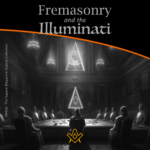 Freemasonry and the Illuminati Unravel the enigmatic world of Freemasonry and the Illuminati in our latest exposé. Dive into centuries-old mysteries, debunk conspiracy theories, and discover the truth behind these elusive societies. Are they puppet masters or mere myths? Join us as we dissect history and fact from fiction. |
 The Île des Templiers, or “Island of the Templars” lies within a leafy park in Paris. The execution site of Jacques du Molay, the last Grand Master of the Knights’ Templar bears a plaque with the epitaph ‘A cet endroit / Jacques de Molay / Dernier grand maître / de l'ordre du temple / a été brûlé le 18 Mars 1314’ (‘In this location / Jacques de Molay / Last grand master / of the order of the temple / was burned on 18 March 1314’) |
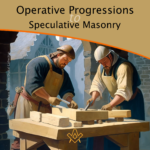 Operative Progressions to Speculative Masonry Both Operative and Speculative Masonry are an important part of the modern fraternity of Freemasonry, which combines elements of both traditions. Today, Freemasonry is a fraternity that is open to men of good character, who are interested in personal development and in making a positive contribution to their communities. |
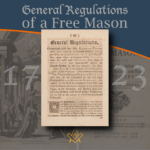 General Regulations of a Free Mason, 1723 General Regulations of a Free Mason as contained in Anderson's Constitutions of the Freemasons, published 1723. the Regulations are of great historical interest. Compiled by George Payne, the second Grand Master of the Premier Grand Lodge of England, they were printed in 1722/3, thus published just over five years after the formation of the Grand Lodge 1717. |
 The Genesis of the 1723 Book of Constitutions 2023, marks the three hundredth anniversary of the publication of the first printed Book of Constitutions of the Grand Lodge formally established in London two years previously. This is an anniversary whose significance extends beyond freemasonry. A paper by Andrew Prescott |
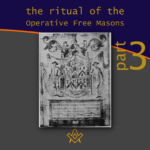 The Ritual of the Operative Free Masons - P3 Existing Operative Free Masons. The ritual I am about to refer, is that of "The Worshipful Society of Free Masons, Rough Masons, Wallers, Slaters, Paviors, Plaisterers, and Bricklayers." By Thomas Carr, M.D., P. M. Honorary Member of the Guild of Operative Free Masons |
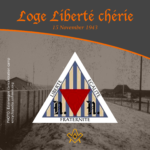 Liberté chérie was a Masonic Lodge founded in 1943 by Belgian Resistance fighters and other political prisoners at Esterwegen concentration camp. It was one of the few lodges of Freemasons founded within a Nazi concentration camp during the Second World War. |
 The Ritual of the Operative Free Masons - P2 If anyone doubts the fact that the formation of Speculative Free Masonry was due to and based upon Operative Free Masonry, it is quite easy to convince him of his error if he will only study the first Book of Constitutions. By Thomas Carr, M.D., P. M. Honorary Member of the Guild of Operative Free Masons |
 In 1881, Freemasonry rose from the ashes of a fire in the mining town of Kokomo, Summit County, Colorado. Corinthian Lodge No. 42, along with Kokomo, no longer exists but it holds the record of having been – at an elevation of 10,618 feet – the highest Masonic Lodge in the USA. |
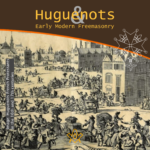 The Huguenots and Early Modern Freemasonry The Huguenots influence in the development of early modern Freemasonry at the time of the formation of the Grand Lodge in London around 1717 / 1723. |
 November is a month of reflection – perhaps due to the fact that we are getting close to the years' end – but also because Remembrance / Armistice Day (11 November) is a significant date in most countries' diaries. |
 Speculative Freemasonry, as practise by Grand Lodge of England, was officially born just over three hundred years ago, is today an international organisation, counting over six million members. It has been subjected to persecution, suppression, and abolition throughout its history. In its infancy, only a couple of decades after its official birth, it had already become a target. |
 The Ritual of the Operative Free Masons - P1 The original paper was written, first, to prove that Speculative Free Masonry was derived from Operative Free Masonry; second, to give some account of the Operative Free Masons, of their Ritual, and of their customs. By Thomas Carr, M.D., P. M. Honorary Member of the Guild of Operative Free Masons |
 American Fraternalism in the 19th and Early 20th Centuries The late 19th and early 20th centuries in the United States has been called the "Golden Age of Fraternalism." How did this come about and why was the idea of joining a fraternal organization so popular? We will explore this question and examine the regalia used by many fraternal organizations in this period. |
 Societas Draconistarum, meaning "Society of the Dragonists"– was a chivalric Order for selected nobility, founded in 1408 by Sigismund von Luxembourg, who through marriage became the King of Hungary (1387–1437) and later Holy Roman Emperor. The Order was fashioned after the military orders of the Crusades, requiring its initiates to defend the cross and fight the enemies of Christianity, in particular the Ottoman Empire. |
 The Perjured Free Mason Detected Was Samuel Prichard a perjured individual, or simply a misguided Freemason? Prichard's book "Free Masonry Dissected" published in 1730, is now used by many Masonic historians as a source of reference with regards to the introduction of the third degree into the Craft. But at the time it was published in 1730, it was not so well received by members of the Grand Lodge of England. |
 17th century and the Holy Royal Arch This article focuses on a period of transition between a point in time when we can safely and historically identify the first formation of what could be called as the ‘Royal Arch’ and the historical events that have preceded it. |
 Most Freemasons have heard the terms 'Operative' and 'Speculative' Masons, and this article helps to understand the difference: |
 Roberts' Constitutions of Freemasonry 1722 Published a year before Anderson's Constitutions, The Old Constitutions Belonging to the Ancient and Honourable SOCIETY OF Free and Accepted MASONS. Originally printed in London England; Sold by J. Roberts, in Warwick-Lane, MDCCXXII.(1722) |
 From 'Songs of religion and life', 1876 by John Stuart Blackie (1809-1895) |
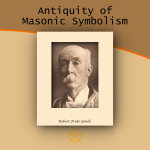 On the Antiquity of Masonic Symbolism Is the Symbolism of Masonry an inheritance derived from the old Masons who flourished before the era of the Grand Lodges (1717); or has it been borrowed from the Rosicrucians or others, after 1717? |
 Mason's Marks – from Egypt to Europe? Mason's marks have been a source of intrigue, not only to Freemasons but to historians and archaeologists. The use of simple pictograms have been employed for millennia by artisans to identify their work. But where did they originate and why? |
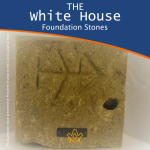 The White House Foundation Stones Further to the articles in our series on the history of the stone masons, we have a rather intriguing addition. During the 1950's renovation of the White House, President Truman retrieved more than 100 stone blocks with stonemasons marks. |
 What the Goose and Gridiron Tavern is in the ancient annals of London Freemasonry, The Green Dragon Tavern is to the memories of the Free-mason, of Boston and New England. |
 Auschwitz concentration camp: video photo article taken in 2013 |
 There are two things of importance happening this day - 27 January |
 Two approaches regarding the understanding of Freemasonry |
 Masonic Research in England c1930 An article which appeared in an American Masonic magazine, c1930 and which was reproduced in England, provoking a little controversy. |
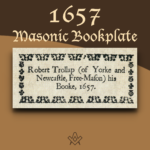 Masonic bookplates the ‘Brethren’s spiritual coats of arms and marks’ |
 The Unlawful Societies Act of 1799 Rebellious Freemasons and the 21st century |
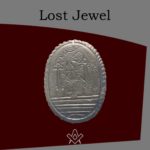 In 1912, Sarah Dowd of Dromore, Ireland, found a Masonic jewel dated 1517 - a date two hundred years before the establishment of Grand Lodge... |
 Freemasonry and Fascist Regime Interesting speech by the famous historian Prof. Aldo A. Mola, who links the fascist regime with the Masonic Associations. |
 Was famous Russian poet Alexander Pushkin a Freemason? And if so, was he a member of the lodge ‘for which all the lodges in Russia were destroyed’? |
 The Importance of Masonic Research Why is accurate - or authentic - Masonic research so important? The importance of making a daily advancement in Masonic knowledge is something that The Square is passionate about promoting. |
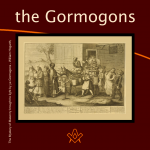 The Antient Noble Order of the Gormogons had a brief existence in the eighteenth century; they left few records or accomplishments, |
masonic knowledge
to be a better citizen of the world
share the square with two brothers

click image to open email app on mobile device








